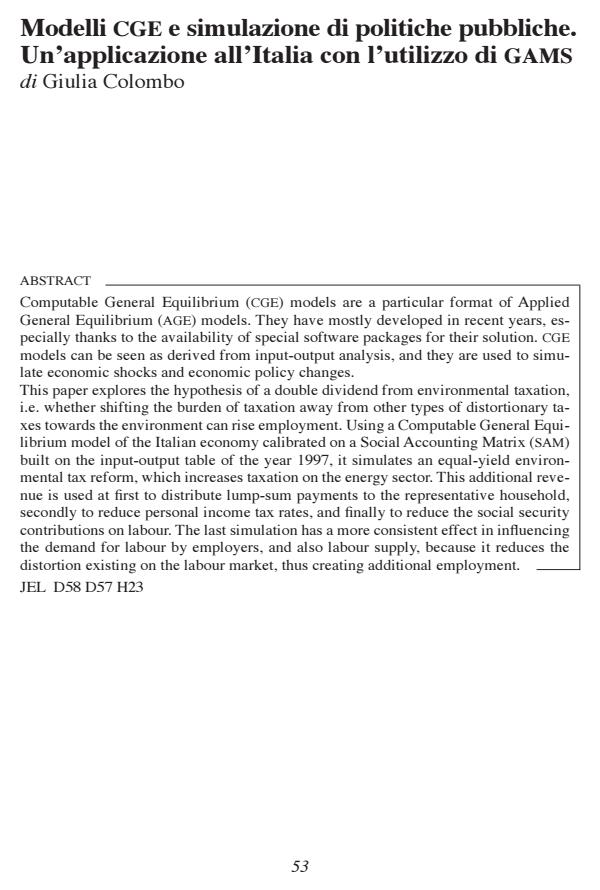Modelli cge e simulazione di politiche pubbliche. Un'applicazione all'Italia con l'utilizzo di GAMS
Titolo Rivista ECONOMIA PUBBLICA
Autori/Curatori Giulia Colombo
Anno di pubblicazione 2007 Fascicolo 2007/1-2
Lingua Italiano Numero pagine 34 P. 53-86 Dimensione file 431 KB
DOI
Il DOI è il codice a barre della proprietà intellettuale: per saperne di più
clicca qui
Qui sotto puoi vedere in anteprima la prima pagina di questo articolo.
Se questo articolo ti interessa, lo puoi acquistare (e scaricare in formato pdf) seguendo le facili indicazioni per acquistare il download credit. Acquista Download Credits per scaricare questo Articolo in formato PDF

FrancoAngeli è membro della Publishers International Linking Association, Inc (PILA)associazione indipendente e non profit per facilitare (attraverso i servizi tecnologici implementati da CrossRef.org) l’accesso degli studiosi ai contenuti digitali nelle pubblicazioni professionali e scientifiche
Computable General Equilibrium (cge) models are a particular format of Applied General Equilibrium (age) models. They have mostly developed in recent years, especially thanks to the availability of special software packages for their solution. cge models can be seen as derived from input-output analysis, and they are used to simulate economic shocks and economic policy changes. This paper explores the hypothesis of a double dividend from environmental taxation, i.e. whether shifting the burden of taxation away from other types of distortionary taxes towards the environment can rise employment. Using a Computable General Equilibrium model of the Italian economy calibrated on a Social Accounting Matrix (sam) built on the input-output table of the year 1997, it simulates an equal-yield environmental tax reform, which increases taxation on the energy sector. This additional revenue is used at first to distribute lump-sum payments to the representative household, secondly to reduce personal income tax rates, and finally to reduce the social security contributions on labour. The last simulation has a more consistent effect in influencing the demand for labour by employers, and also labour supply, because it reduces the distortion existing on the labour market, thus creating additional employmen
Giulia Colombo, Modelli cge e simulazione di politiche pubbliche. Un'applicazione all'Italia con l'utilizzo di GAMS in "ECONOMIA PUBBLICA " 1-2/2007, pp 53-86, DOI: